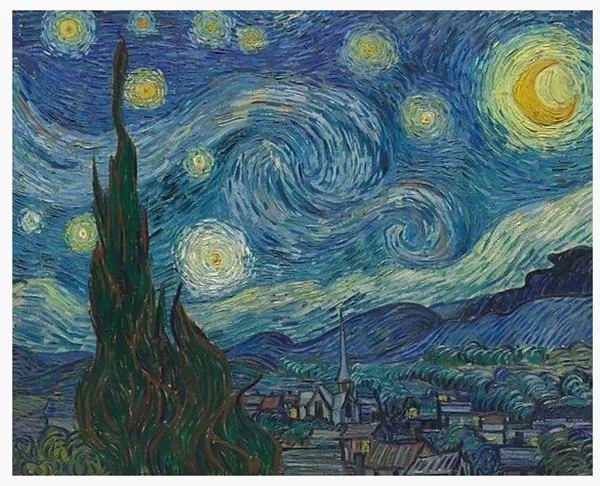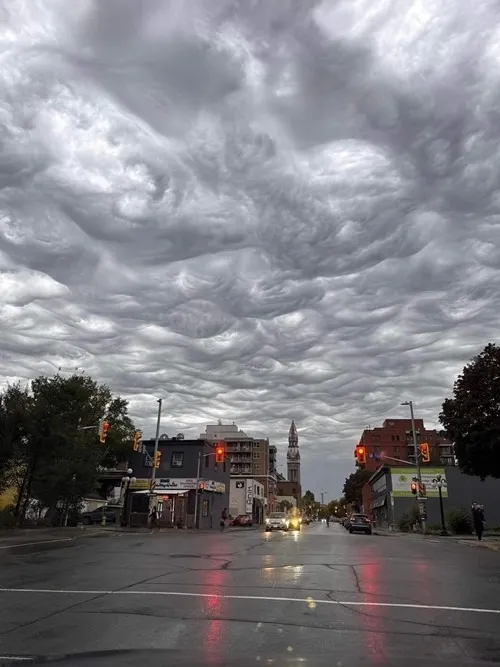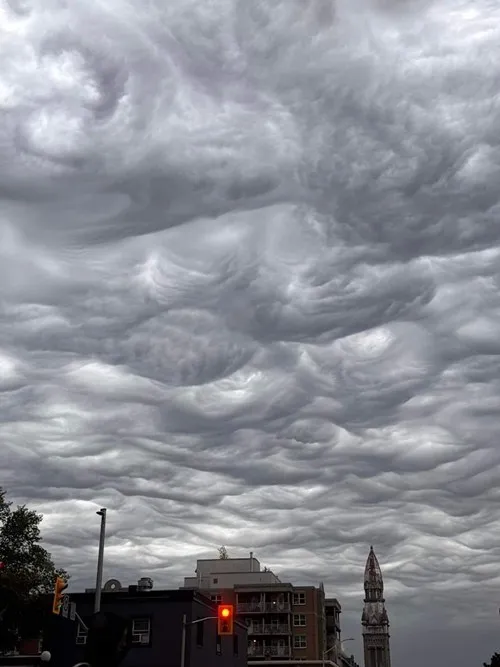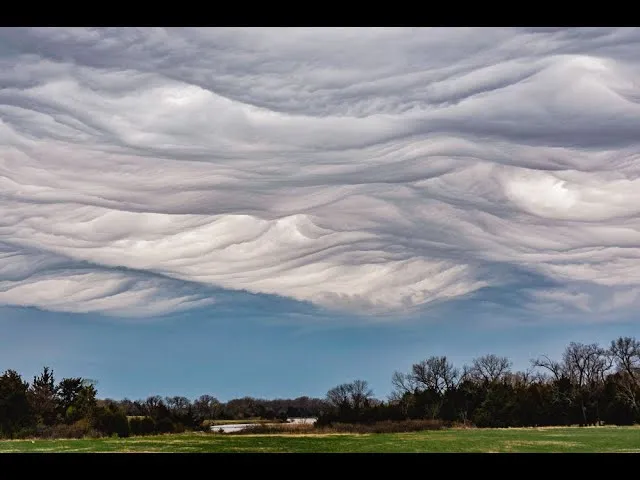
In a remarkable display of nature’s artistic prowess, residents of Ottawa, Canada, recently witnessed an extraordinary meteorological phenomenon that transformed their morning skies into what appeared to be a living, breathing canvas reminiscent of Vincent van Gogh’s “The Starry Night.”
The spectacular scene, captured by local photographers, showed an otherworldly formation of undulating clouds, technically known as asperitas clouds, creating wave-like patterns across the entire sky. These rare cloud formations, characterized by their distinctive rippling patterns, created an almost supernatural atmosphere over the Canadian capital.

“I’ve never seen anything quite like it,” says Sarah Thompson, a local photographer who documented the event. “The way the clouds moved and swirled, it was as if van Gogh himself had taken to the sky as his canvas. The resemblance to ‘The Starry Night’ was uncanny.”
The phenomenon drew immediate comparisons to van Gogh’s masterpiece, one of the most recognized paintings in the history of Western culture. While the original painting features swirling patterns in deep blues and yellows, Ottawa’s sky presented a monochromatic version in various shades of gray, creating an equally mesmerizing effect.

Dr. Michael Roberts, a meteorologist at the Canadian Weather Service, explains the science behind this fascinating display: “What we’re seeing is a relatively rare cloud formation called undulatus asperatus. These clouds typically form when turbulent conditions exist between different layers of the atmosphere, creating these wave-like patterns. While they might look ominous, they’re generally harmless.”
The timing of this natural phenomenon couldn’t be more poignant, as it occurs when digital recreations and artistic interpretations of van Gogh’s works are gaining unprecedented popularity worldwide. This real-life atmospheric display serves as a reminder that nature remains the ultimate artist.
Social media platforms quickly filled with photographs and videos of the spectacular sky, with many users drawing parallels between the natural phenomenon and the Dutch master’s artistic vision. The hashtag #OttawaStarryMorning began trending as images spread across various platforms.

“It’s fascinating how this weather event has connected science and art in such a visible way,” notes Dr. Emily Chen, an art historian at the University of Ottawa. “Van Gogh was known for his ability to capture the dynamic energy of nature in his paintings. These clouds show us that perhaps he wasn’t exaggerating as much as some might have thought – nature really does create these incredible patterns.”
While some observers initially dubbed them “apocalyptic clouds” due to their dramatic appearance, meteorologists assure that these formations, though rare, are a natural occurrence. They’re typically associated with unstable atmospheric conditions and can appear before or after severe weather systems, though they don’t necessarily indicate severe weather themselves.

The event has sparked renewed interest in both meteorological phenomena and art history among Ottawa residents. Local museums report increased interest in their weather science exhibits and art collections, particularly those featuring impressionist works.
This extraordinary convergence of meteorological conditions not only provided a spectacular show for Ottawa residents but also offered a unique moment of reflection on the intersection of art and nature. It reminds us that sometimes, reality can be just as captivating as the most celebrated works of art – and that perhaps van Gogh’s vision was more realistic than we previously imagined.
As one social media user aptly commented, “Who needs art galleries when nature can paint the sky like this?” Indeed, while van Gogh’s masterpiece hangs in the Museum of Modern Art in New York, Ottawa residents got to experience their own version, painted across the canvas of their morning sky.